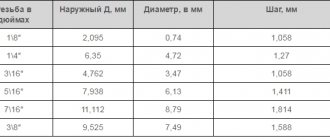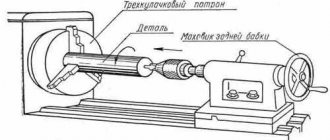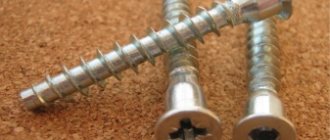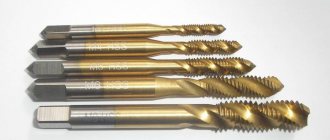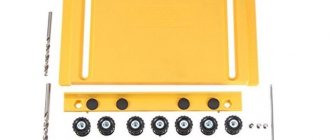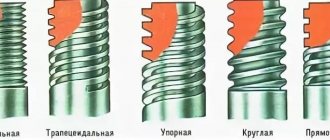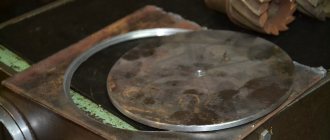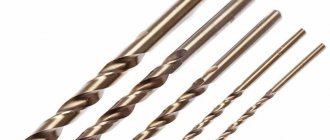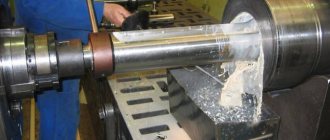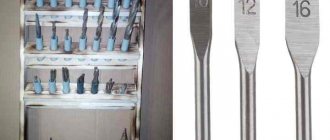Confirmat is the most popular fastening element used in the production of cabinet furniture. Confirmations became widespread back in the 90s of the last century and since then have been actively used by specialists working in furniture production.
Confirmats are great for assembling homemade furniture
The correct name for this fastening element (along with the designations “Euroscrew”, “Euroscrew”, and sometimes simply “Euroscrew”, which are common among home craftsmen) is “single-element tie”. The word indicated in the title comes from the name of the Confirmat trademark, which the German company Hafele began to use when producing fasteners of this type.
Design features and advantages of use
Confirmats are screws equipped with a countersunk head, which has two types of slots. Thanks to the presence of these slots, Euroscrews can be tightened with either a four- or hexagonal screwdriver. The rod of such a screw has a blunt end, and its working part has a widely protruding thread. Bottom threads are designed to cut threads into a pre-prepared hole, so they are conical and serrated. Under the head, the Euroscrews have a smooth (no thread) surface.
Significant parts of the confirmation
All confirmats have a protective coating of zinc, brass or nickel, and are made from high-quality carbon steel. The use of such steel makes it possible to give Euroscrews high ductility, due to which they bend but do not break. The high plasticity of confirmats ensures their easy removal from furniture even if their installation is carried out incorrectly.
The use of confirmata allows you to connect furniture elements made not only from natural wood, but also from its processed products - MDF and chipboard. Based on the ratio of the outer diameter of the thread and the length of the screw, fasteners of this type are presented on the modern market in the following standard sizes: 5x40, 5x50, 6.3x40, 6.3x50, 7x40, 7x50, 7x60 and 7x70 mm. The most popular are Euroscrews, the length of which is 50 and 70 mm, and the thread diameter is 7 mm.
Sizes of common confirmations
There are varieties of confirmations produced with a regular cap. When using them, additional countersinking of the hole is required. Certain categories of confirmats are made with a special tooth located under the cap. The purpose of such a tooth is to form a chamfer in which its head will be located when installing the fastener.
If the confirmation cap is on the front side of the furniture product, it can be disguised using a decorative plug or sticker, which any hardware store offers in a large assortment today. When choosing such decorative elements, you should take into account not only the size of the Euroscrew head, but also the texture and color of the furniture structural elements that are connected with it.
The diameter of the securing decorative protrusion of the plug must match the size of the recess in the confirmation cap
Confirmation drill – three in one
Working with a special confirmat drill (cutter) is much easier, since it has a special stepped geometry, and the entire operation is performed in one pass. An additional advantage of using it is that it simultaneously chamfers the countersunk head of the hardware. In fact, it replaces two drills and a countersink of different diameters. In addition, the confirmatory cutter has an insertion part with a sharp tip, which ensures precise insertion of the tool and eliminates the risk of it being pulled to the side at the beginning of drilling.
Read also: What is the thread on the carbon dioxide cylinder
How to fasten with Euroscrews
To use confirmations, certain skills in working with such fasteners are required, as well as knowledge of the characteristics of the material from which the products being connected are made. Drilling for confirmation is performed with a tool whose diameter is 4.5–5 mm. In this case, it is best to use drills that have a stepped cutter attached, which allows you to immediately chamfer the location of the screw head. Using such a tool, you can get a finished hole in one pass. In this case, the cutter forms an ideal surface for the screw head, which cannot be said about the drill, which, when removed, can leave chips on the edges of the hole (they, however, will subsequently be covered by the confirmat head).
Euroscrew installation sequence
Euroscrews, when compared with other types of fasteners, provide more reliable fixation of the parts being connected. This is explained by the wider arrangement of threaded elements, which reliably cut into the material. Install confirmations manually, as well as using an electric drill with appropriate attachments or a screwdriver. For those who do not have experience working with such fasteners, it is better to install them manually, so that in case of excessive resistance of the screw, they can be able to remove it from the furniture elements being connected at any time.
Read also: Range of equal flange steel
What holes should I drill for the Euroscrew? — Metals, equipment, instructions
A single-element screed is a fastener loved by professional furniture makers and ordinary DIYers.
Widely known since the 90s under different names: “Euroscrew”, “Confirmat” and others. The German company Hafele was one of the first to produce products. The brand name was Confirmat.
To insert fasteners, a special drill for confirmat .
A hole is required for the euroscrew. The difficulty lies in the fact that its design is heterogeneous: the outer diameter of the thread and the size of the head are different. There is also a hat. All this must be taken into account for reliable fastening. You can do the following:
- Drill a hole corresponding to the length of the confirmat. Its diameter is made slightly smaller than that of the external thread.
- The head of the European screw is slightly wider. It should fit tightly into the hole, but not too tightly, otherwise cracks may appear. The upper part of the hole already made will have to be expanded with a drill of the required diameter.
- In order for the hat to fit well, you need to make room for it . To obtain the desired socket, additional processing is carried out using a countersink. Although some masters omit this step: it is enough to twist the confirmation a little more tightly.
That is, in order to insert one euroscrew, you need to have two suitable drills and, preferably, a countersink. You will need to perform several operations, each of which may end in failure, especially for a beginner:
- the position of the hole and its angle may be taken incorrectly, which will affect the reliability of the connection;
- When countersinking, chips are possible.
A special confirmation drill can significantly simplify the process and save time and nerves. Usually it replaces all the tools described above and allows you to make a hole quickly, in one motion. Good examples do not damage the edges of the hole or do so only slightly. A small defect can usually be closed with a cap or plug. Products fit:
- for hard and soft wood;
- for chipboards with and without coating;
- for plastic.
Dimensions
The confirmation holes correspond to the following drill sizes:
- HSS 7x70;
- HSS 7x50;
- HSS 6.3×50;
- HSS 5x50.
HSS from English High - Speed Steels, that is, products are made of high-speed tool steel. The foreign brand HSS 4341 or Russian ones are best suited for their manufacture:
The hole should be stepped, since the confirmat has parts of different diameters. Therefore, special drills for it should follow the shape of the fastener. This can be achieved with the help of an appropriate design.
The fastening part is connected to the drill chuck. It has a hole (blind) for a removable drill. The latter has a sliding fit and is made with a slight gap. This prevents bending and breakage. The cutting part is stepped, allowing you to make a hole with several diameters at a time. The design may not be dismountable.
The Euroscrew drill has the following structural features:
- The front part is made at an acute angle. This is necessary for better fit and ensures centering of the hole.
- The angle of the helical groove is the same as that of the thread in the confirmation. The fastener fits well and holds more securely.
- The position of the thrust part can be adjusted. This helps to avoid over-drilling: there is no need to additionally monitor the depth of the hole.
- Polishing the surface of feathers is given special importance. This reduces friction and improves chip removal. The latter is removed through the holes in the end of the stop.
- The contact area of the stop is made as small as possible so as not to crush the side surfaces of the hole. The drill life remains within acceptable limits.
- The stop not only centers, but also performs countersinking, which is necessary for better fit of the head. That is, the hole is turnkey, you can immediately insert the confirmation.
Main characteristics
A high-quality drill bit for a furniture euroscrew should have the following characteristics:
- impact strength (kc): 150−165;
- temperature resistance 120−150 °C;
- hardness: 61−64;
- resistance to bending at a given level.
These parameters are required:
- for quickly creating the desired hole;
- to prevent the formation of defects, such as chips;
- for long service.
When choosing a drill for a furniture euroscrew, you need to pay attention first of all:
- for sizes;
- to the manufacturer;
- for the cost.
There are a lot of Chinese products on sale. It usually has a very attractive price, but the quality leaves much to be desired. The lack of reliability is usually explained by the following:
- the steel used is not suitable for the working conditions;
- the material has not been processed correctly.
Manufacturers from the Middle Kingdom often use any tool steel. As a result, the hardness quickly decreases and the drill becomes dull. When working, the master has to increase the pressing force. The material often breaks down and crumbles.
If the heat treatment of the drill is carried out incorrectly, it will be subject to bending. This usually occurs when you need to make several holes in succession.
Much more reliable are Russian confirmed drills made by:
- LLC "Tula Tool Plant";
- LLC "BSI-instrument"
From foreign ones , for example:
- Archimedes (Switzerland);
- DeWalt (USA).
Foreign products are at least twice as expensive. It is important to immediately determine some characteristics when purchasing:
- The size of the smooth part of the confirmat and the depth of the drill seat must be the same.
- It is desirable that there are as few roughnesses on the feathers as possible.
- Part of the countersink stop is at an angle of 45°, the transition to the thread is smooth.
- The quality of the holes in non-demountable and collapsible designs is the same. However, the last option is more convenient. It is suitable in different cases, since the confirmation varies.
Only a tool with high power is suitable for the job. Euroscrews can also be tightened “according to the old-fashioned method” described at the beginning of the article. However, this will require significantly more effort, time and skill. Therefore, many people opt for confirmed drills. From the variety of products you can always choose something suitable.
How to choose a drill for a Euroscrew (confirmed)
Screws, screws, self-tapping screws, etc. are used everywhere, however, to assemble furniture you need not only the skills and experience of a craftsman, but also high-quality specialized fasteners. One of the most popular methods of fixing parts is the technology using a Euroscrew (confirmat).
This fastener allows you to securely attach to the material in one operation. You just need to make a geometrically correct hole. To do this, you need a special drill for confirmat (euroscrew). Its dimensions are strictly defined. The product is unified to a single standard, therefore, it can be easily replaced with a similar one from another manufacturer.
Externally, a Euroscrew resembles a screw, from which it fundamentally differs in the diameter and shape of the cut tooth. This design feature allows you to increase the area of contact with the body of the fastened part several times. As a result, connection reliability increases significantly.
One confirmat replaces 3-4 screws of the same length. For furniture made from chipboard, the figures are even more impressive. The middle of the sheet is the loosest part of the material. A thin screw is not able to securely fix itself. The Euroscrew, due to its larger diameter, grips harder layers of chipboard and it is no coincidence that manufacturers clearly give preference to it.
Manufacturers offer a line of products with different sizes for different types of connections. Not all models can be found in the store. Some are used only for special purposes. They can be ordered or purchased at specialized retail outlets.
The method of twisting the confirmat depends on the shape of the head. It can be hexagonal or cross-shaped. For euroscrews of small diameter (5 mm) a 3 mm wrench is used, and for large products (7 mm) a 4 mm wrench is used.
In accordance with the table, the dimensions of the drill are determined. Depending on the material, the hole for the thread is made either 3.5 mm or 4.5-5 mm. The confirmatory head requires a diameter of 5 mm and 7 mm, respectively, depending on the brand.
Design features of drills for confirmations
Euroscrews are used both on hardwood products and on furniture made from chipboard and LMDF. In these cases, the load on the tool is high. When choosing low-quality products, noticeable wear of the cutting edge occurs. When purchasing, you need to make sure that the confirmat drill has a Rockwell hardness of 61-64. A self-respecting manufacturer indicates this value on the packaging.
If the drill falls into the hands of a master without information about the product, then you need to look at the body of the product. Domestic manufacturers write the steel grade. Drills made from alloys R9M5 and R18 are considered the best.
Among imported products, products made from HSS 4341 have excellent performance. The abbreviation stands for High-Speed Steels, that is, just like P9M5 and P18, it is high-speed steel.
It is most convenient to use a finished product, where the diameter of the drill is precisely selected for the confirmation and there is an additional cutting edge for the head, where there is no thread, and to create a chamfer for the head. The design increases productivity several times.
Three operations are performed in one pass. You can use a set of drills of the required diameter. However, for better performance it needs to be improved. The factory device has a sharper sharpening angle of the cutting edges. This makes the approach easier and more accurate.
How to choose a drill for a Euroscrew (confirmed)
Before you start assembling furniture, you need to prepare all the tools. Information about the Euroscrew itself will help you choose which drill to use for the confirmation. If you have a ready-made device of the right brand, then there will be no problems.
However, often in the practice of home craftsmen there is a situation when they have to work with what is available. It is strongly not recommended to use drills of a smaller diameter - for confirmations 5x40, 5x50 this size is 3.4 mm, and for products 7x40, 7x50, 7x60, 7x70 - 4.5 mm.
The fastening element does not screw into a hole that is not large enough in size and becomes jammed. If you work with furniture parts made of chipboard or LMDF, then at best they will swell, and at worst they will crack.
The head of the confirmat is measured, the part that is inside the product but does not have a thread. It may vary slightly between different manufacturers. The diameter ranges from 6.3mm to 7mm. Which confirm drill should I choose in these cases? The factory device is designed for a diameter of 7 mm.
It is universal because the size of the head does not play any role in ensuring the reliability of the connection. This part of the Euroscrew is located in the upper, pressing part. The load falls on the confirmation cap, which centers the fastener and tightens the structural elements.
A little play is sometimes even convenient. If there are minor errors, the connection can be loosened, the position of the part adjusted and the screw tightened again. Even a hole a millimeter larger than 8 mm will not impair the reliability of the fastener.
How to drill a hole for placing a confirmat
The confirmat is screwed into a previously prepared hole, so the question of how to drill such a hole is quite relevant. To do this you will need the following tools and materials:
- screwdriver or electric drill;
- bit of the appropriate size;
- drill for confirmation;
- a measuring tool, which can be a ruler (or a construction tape);
- pencil;
- awl.
To facilitate marking and maintain a strictly perpendicular position of the drill, use a template for drilling holes for confirmat
Hole dimensions for Euroscrew
For furniture assembly, Euro screws are usually used, the dimensions of which are 6.4x50 mm. To make holes for such a confirmat, the outer thread diameter of which is 6.4 mm, and the cross-sectional size of the screw body is 4.4 mm, a drill with a diameter of 4.5–5 mm is used. Drilling holes for confirmation of this type should be performed to a depth of at least 50 mm. If the diameter of the hole is larger than the specified value, then the Euroscrew simply will not hold; if it is smaller, it can tear the furniture element into which it is screwed.
The step drill is selected based on the dimensions of the specific Euroscrew model
The drill used to make holes for the confirmation must be equipped with a special working head. On the one hand, she prepares an expanded hole for the neck of the screw, on the other hand, she countersinks the place where the screw head will be placed. To place the confirmat, you can also use a regular drill, but in this case it is necessary to prepare places for the neck of the fastener and its head.
Marking drilling locations
The reliability and quality of connections made using confirmats largely depend on the accuracy of marking future holes for them. On the element that will overlap the end of another element of the furniture structure, two types of markings are made:
- drilling depth (5–10 cm);
- the center of the future hole (if the thickness of the joining part is 16 mm, it should be at a distance of 8 mm from the edge of the slab).
Drilling diagram for Euro screws
On the element being joined, the drilling point is marked at its end, placing it strictly in the middle of the furniture board.
To mark the drilling locations as accurately as possible, you can use the following simple technique: after preliminary marking, a through hole is made in the applied part, through which, by attaching the first part to the second, a rotating drill is used to mark the location of the second hole for the European screw.
Making holes
In order to make the holes for placing confirmations as efficiently as possible, it is advisable to follow the recommendations below.
- Before drilling a part, you need to place a piece of unnecessary chipboard under it: this will prevent chips from appearing at the exit of the hole being created.
- The formation of places for the neck and cap of the confirmat in an already made hole can be done by holding the workpiece in weight.
- When drilling both in the layer of the part and at its end, the drill is positioned strictly perpendicularly. This will allow you to get a high-quality result and not damage the part.
- When drilling two parts simultaneously, they must be securely fixed in the required position, for which you can use clamps and other clamping devices. This is the most accurate and fastest way to create confirmation holes.
- When drilling holes for dowels, it is advisable to equip the tool used with a depth limiter, which will prevent damage to the workpiece by drilling through them.
The main fastening element in furniture assembly is the confirmat. It is screwed in with pre-drilled holes. It is the drilling of assembly holes in chipboard for confirmations that we will consider in this article.
VIDEO: Confirmation
Modern furniture made of chipboard and MDF is often assembled using confirmatory screws, which among furniture makers are also called Euroscrews or Euroscrews. Before screwing them in, technological holes with strictly specified parameters are drilled in the plates. The process of preparing these holes will be discussed in this article.
The hole for the confirmation is drilled in the thickness of the first part and in the end of the second part, which are joined at a right angle. Along the length it should have a stepped difference in diameters. This is due to the design features of the Euroscrew. Its rod consists of a cylindrical smooth neck and a main threaded part. A hole of a smaller diameter is drilled for the thread, and a larger one for the neck. The fastener also has a countersunk head in the shape of a truncated cone, for which a seat is prepared. In practice, two hole drilling technologies are used.
Hole depth and width
When assembling furniture, confirmat size 6.4*50 is usually used. Because the thread diameter is 6.4 mm, and the diameter of the confirmation body is 4.4 mm, then for high-quality fastening of parts, the hole diameter must be in the range of 4.5-5 mm and a depth of at least 50 mm.
If the thickness of the hole is greater than the specified one, the confirmat will not hold the parts well; if it is less, its thickness can tear the chipboard.
For drilling, use a confirmat drill with a diameter of 4.5 mm, which is equipped with an additional head for drilling an enlarged hole for the neck of the confirmat, which also makes a countersink for its head.
Of course, you can use a regular drill with a diameter of 5 mm, but for high-quality fastening in the hole you will additionally need to make space for the neck of the confirmat and its head.
Read also: Backup power switch 220
Using three drills of different diameters
Confirm screw made of galvanized steel
This method is suitable for small volumes of work, as it requires more time. Hole preparation is performed in three approaches:
First step
– drilling through two parts for the entire length of the Euroscrew. The diameter of the drill must be equal to the diameter of the screw body without taking into account the thread. This is done so that the threads can cut a counter thread in the material.
Second step
– expansion of the already obtained hole for the smooth part of the hardware, which should have a tight fit, but not too tight, so as not to split the material. Reaming is performed with a drill equal to the thickness of the neck and to a depth equal to its length.
Third step
– countersinking a hole to deepen the head into the material. This can be done with a drill of a larger diameter, but to obtain a high-quality result without chipping, it is better to perform this operation with a countersink.
Marking drilling locations
In order to perfectly fasten two parts, it is necessary to mark the places of their fastenings as accurately as possible.
On the part that will be applied to the end (the one on which there will be a through hole), you need to make two measurements - along the length (usually 5-10 cm) and from the edge - exactly 8 mm (this is if the thickness of the plate is 16 mm).
On a part that lies perpendicular, mark the drilling point at the end. Here you need to maintain the same distance in length (5-10 cm from the beginning), and in width - strictly in the center (8 mm from the edge).
Markings must be done as accurately as possible, especially along the length, because If the markings are incorrect, your parts may have extra gaps or protrusions when joined.
It is better to make a through hole in the first part, attach it to the second - and immediately use a drill to mark the drilling location at the end of the second part. And then, separately, calmly drill the hole.
What kind of drill to drill for a Euroscrew?
The main fastening element in furniture assembly is the confirmat. It is screwed in with pre-drilled holes. It is the drilling of assembly holes in chipboard for confirmations that we will consider in this article.
Necessary tool
To assemble the chipboard parts we will need:
- Screwdriver
- Confirmation bat
- Ruler or tape measure
- Pencil and awl
Hole depth and width
When usually using confirmat, size 6.4 * 50, because the thread diameter is 6.4 mm, and the diameter of the confirmation body is 4.4 mm, then for high-quality fastening of parts, the hole diameter must be in the range of 4.5-5 mm, and at least 50 mm deep.
If the thickness of the hole is greater than the specified one, the confirmat will not hold the parts well; if it is less, its thickness can tear the chipboard.
For drilling, use a confirmat drill with a diameter of 4.5 mm, which is equipped with an additional head for drilling an enlarged hole for the neck of the confirmat, which also makes a countersink for its head.
Of course, you can use a regular drill with a diameter of 5 mm, but for high-quality fastening, you will additionally need to make space in the hole for the neck of the confirmat and its head.
In order to perfectly fasten two parts, it is necessary to mark the places of their fastenings as accurately as possible.
On the part that will be adjusted to the end (the one on which there will be a through hole), you need to make two measurements - along the length (usually 5-10 cm) and from the edge - exactly 8 mm (this is if the thickness of the plate is 16 mm).
On a part that lies perpendicular, mark the drilling point at the end. Here you need to maintain the same distance in length (5-10cm from the beginning), and in width - strictly in the center (8 mm from the edge).
Markings must be done as accurately as possible, especially along the length, because If the markings are incorrect, your parts may have extra gaps or protrusions when joined.
It is better to make a through hole in the first part, attach it to the second and immediately use a drill to mark the drilling location at the end of the second part, and then separately, calmly drill the hole.
We make a hole at a distance of 8 mm from the edge, the drill must be held strictly perpendicular to the surface.
Before making a through hole, place a piece of unnecessary chipboard under the part, this will prevent chips from appearing on the back side.
When the through hole is made for drilling holes for the neck and cap of the confirmat, the part can be drilled while hanging.
As you know, the main fasteners in assembling furniture with chipboard or MDF are confirmats. And they are screwed in with preliminary drilling of holes of the required size. It is the drilling of an assembly hole in a chipboard for confirmation that we will consider in this article.
Necessary tool
To assemble parts with chipboard you will need:
- Electric screwdriver;
- Bit or key for confirmation;
- Special confirmation drill;
- Measuring tape or ruler;
- Awl and a simple pencil;
- The required number of confirmations (in accordance with the details).
Depth and width of holes
| 1. | Diameter | 6.3 mm | 7.0 mm |
| 2. | Thread pitch (B), mm | 2,40 | 3,00 |
| 3. | Thread diameter (D), mm | 6,10 — 6,30 | 6,72 — 7,05 |
| 4. | Body diameter (d), mm | 4,40 | 4,70 |
| 5. | Tip diameter (d2), mm | 4,20 — 4,30 | 4,45 — 4,55 |
| 6. | Length of threadless section (T), mm | 2,40 — 4,80 | 3,00 — 6,00 |
| 7. | Head diameter (P), mm | 9,50 — 10,30 | 9,50 — 10,30 |
| 8. | Head height (H), mm | 7,00 — 9,00 | 10,00 — 12,00 |
| 9. | Wrench size (M), mm | 4,02 — 4,12 | 4,02 — 4,12 |
| 10. | Slot depth (h), mm | 2,72 — 3,20 | 2,72 — 3,20 |
To assemble furniture, as a rule, confirmats measuring 6.4x50 millimeters are used, since the full diameter of the thread is 6.4 millimeters, and the diameter of the body of the confirmat itself is 4.4 millimeters.
Therefore, for high-quality fastening of furniture parts with chipboard, the diameter of the holes for confirmations must be at least 4.5 millimeters and at most 5.0 millimeters and the depth, respectively, is not less than 5.0 centimeters.
Otherwise, for example, if the diameter of the hole is larger than the designated one, then the confirmat will not hold the part properly; if it is smaller, then there is a very high risk that the confirmat, with its thickness, will tear the part from the chipboard.
To drill holes, use a special confirmation drill, the diameter of which is 4.5 millimeters. This drill is equipped with an additional head for drilling an enlarged hole for the neck of the confirmat, and which also performs a countersink for its head.
Naturally, you can use a regular wood drill with a diameter of 5 millimeters, but for high-quality fastening you will have to additionally make a hole with a larger diameter drill for the neck of the confirmat, and then a countersink for its head. All this is possible, but very troublesome.
Marking the places for drilling holes for confirmations
In order to ensure high quality, you need to mark the places of their attachment as accurately as possible.
For example, for parts that are adjusted at the end, these are those on which there will be through holes, you need to take two measurements, one along the length, usually 5.0-10.0 centimeters, and the second from the edge exactly 0.8 centimeters (since the thickness of our part with chipboard is 1.6 centimeters, you may have a different one).
The hole in the part, which lies perpendicular to the end, is drilled accordingly and the marking occurs at the end of the part. Therefore, we maintain exactly the same distance in length, namely 5.0-10.0 centimeters, and in width strictly in the center of the end of the part, 0.8 centimeters from the edge, respectively.
The most accurate marking is needed not only for high-quality joining of parts, but also if the marking is incorrect, and subsequently the joining of parts, there may be extra protrusions or gaps.
Therefore, in order not to make mistakes with the calculations, drill a through hole, then correctly join the parts and use a drill to mark the drilling point at the end. Then remove one part and confidently drill a hole in the end of the part.
Drilling in the plane of the part
Make a mark (0.8 centimeters from the edge and 5.0-10.0 centimeters along the part) and then use an awl to make a recess at the intended point, this is necessary so that the drill does not “run” at the beginning of drilling.
When drilling, make sure that the drill is strictly perpendicular to the surface of the part.
And in order to prevent a chip from forming on the back side during the through drilling process, you need to place a piece of chipboard you don’t need under the part.
When you drill the part, remove the placed piece of chipboard all the way through and place something thicker under the part so that the part is suspended, and continue drilling a hole for the neck and cap of the confirmat.
Drilling holes in the end of the part
As in all cases with drilling holes, the most important rule is that the drill must be strictly perpendicular to the part. In the case of drilling at the end of a part, everything is even more complicated and you need to act extremely carefully, otherwise the drill may “go” to the side, thereby ruining the part.
When drilling a hole in the end of a part with chipboard, it is necessary to pull out the drill so that chips do not clog into the hole.
Drilling holes in two parts at the same time
This drilling option is considered the most accurate and, in addition, the fastest. Before you start drilling two parts at the same time, you need to securely fix them, and for this you will need special clamps, a clamp or other device.
Drilling accessories
In order not to waste time each time marking 08 centimeters from the edge both in the plane and along the end of the part, you can use a special device, which, by the way, is very easy to make yourself. This device can be described in a few words - it is a kind of wooden template with a metal tube for a drill inside.
It looks something like this:
Naturally, there are more professional tools, for example, like this “drilling jig”
Drilling in two parts at the same time
This option is considered the most accurate and, moreover, the fastest. But in order to make a hole in two parts at the same time, you will need to fix them before drilling. To do this, you may need special clamps, clamps and other devices.
Hole Drilling Tools
In order not to mark 8 mm from the edge each time both into the layer and at the end, you can use a special device, which, by the way, is easy to make yourself.
It is a kind of wooden template with a metal sleeve for a drill inside.
It looks like this, see photo:
And this is a more professional thing:
Watch a short video on how to accurately drill holes in chipboard for confirmations and assemble furniture parts:
Scope of application
Carpentry, and more specifically working with furniture, is the main area of use of products. But in woodworking there are also several vectors where it is possible to use products:
- furniture industry (both in large production volumes and small workshop assemblies);
- production of various items by folk craftsmen;
- repair of various items;
- installation of wood products (and other materials), etc.
Fasteners are made from high quality materials, often carbon steel.
Note. The products have been in use for more than twenty years, and remain at the early stages of popularity in the market. This indicates the success of this project.
This is interesting: Aluminum U-shaped channel - characteristics and advantages
Drilling for dowels
The hole for the dowels is made with an 8 mm drill. Also, in order not to drill through the part, it is advisable to equip it with a depth limiter.
At the end we drill with the same drill to a depth of 20 mm. Do not forget that during any work the drill must be strictly perpendicular to the plane of the part.
Of course, if you picked up a drill for the first time in your life, you won’t do very well. But this activity can be learned quite quickly.
In construction, there are many fasteners, for example, screws, nails, self-tapping screws. Sometimes it is difficult to understand from their name what they are talking about. For example, let’s take a fastening element such as a confirmat.
The word is unusual, but the meaning is simple. This is a furniture screw. It got its name from a German company. In our country, this fastener has become popular since 1990. The confirmat has its own characteristics and varieties, which we will discuss below.
Furniture euroscrew, advantages, fastening element dimensions
When purchasing furniture, people try to save money on its assembly. If this service is not included in the price, they often install the products themselves, using independently selected fittings.
In this important matter, a furniture euroscrew, which has universal properties, comes to the rescue. It differs from other screeding methods in its ease of installation and minimum tools required.
It has become popular among Russians since the 90s.
Features and advantages of the fastener
This screw has several names: furniture euro screw, euro screw, euro screw. It is also called confirmat by analogy with the German trademark of the same name. It would be more correct to use the term “single-element screed,” but it is inconvenient and rarely used.
Scope of application of furniture hinges with a closer, installation features
A confirmat is a screw that has a head with slots for a tetrahedron, hexagon or figured screwdriver . The conical shape of the rod and sharp serrations on the end make it possible to easily cut threads in prepared holes. A smooth surface is provided under the head.
Furniture euroscrews have a number of advantages:
- high speed of parts fastening;
- reliability of connection of various materials;
- low cost;
- the ability to disassemble assembled furniture without damaging the holes;
- ease of assembly without the use of special tools.
There are minor disadvantages:
- the need to hide the heads using plugs or overlays;
- impossibility of assembling and disassembling a piece of furniture more than 3-4 times.
Euroscrews are often compared to ordinary self-tapping screws. This is not entirely correct, since there are certain differences in working with them. Drilling preliminary holes for Euroscrews takes a lot of time, but this small drawback is more than compensated for by the durable clamping of the parts. Self-tapping screws tighten faster.
The design of the confirmat ensures reliable fastening even of porous materials.
Scope of application
The use of Euroscrew is directly related to the manufacture and assembly of furniture and carpentry. Simplicity, reliability and high speed when working using familiar tools made this confirmation a leader among analogues . It is necessary to distinguish several areas of work where this fastening element is widely used:
- production of furniture in production;
- repair;
- making cabinet interior items with your own hands;
- assembly of finished products.
The design features of the European furniture screw allow it to be used with materials of different compositions:
- wooden sheets and boards;
- chipboard;
- laminated chipboard;
- Fiberboard;
- plywood.
Before starting furniture manufacturing or assembly, the craftsman should take care of purchasing plugs. They completely cover the caps and give the product a finished look. There are two types of plugs: self-adhesive and plastic. Both can be matched to the color of the furniture. Due to convenience, self-adhesive options are more used. The cost of the plugs is almost the same.
Laminated chipboard Wood Fiberboard Repair Industrial furniture assembly Manufacturing of cabinet objects Do-it-yourself furniture making Wood-look plugs
Installation nuances
Euroscrews are quite simple and easy to use, but basic skills in furniture assembly are required. Inept actions when drilling can ruin the workpiece. Not everyone can choose the correct drill diameter or determine by eye the perpendicularity of the tool during operation. A slight deviation will cause the hole to come out.
For drilling, nozzles of different diameters are usually used to make three holes: for thread, head and countersunk. The use of several tools is justified only when performing small-scale work.
Professional furniture makers use a special drill with a step cutter, which is capable of performing all three operations simultaneously.
When removing the tool, minor chips are possible, which are easily covered by the wide cap.
To speed up installation work, high-speed power tools are required. Drilling at high speeds is especially important to keep chips from getting into the holes.
Furniture parts are mainly attached at an angle of 90 degrees. First you need to make a hole in the plane of one part, and then in the end of the other.
After this, a screwdriver is used, although it is better for beginners to use hand tools at first.
When working, it is important to install the parts perfectly evenly, avoiding displacement.
Incorrectly combined parts spoil the aesthetic perception of a piece of furniture and disrupt the functions of moving elements. To avoid such troubles, you should pay attention to some nuances:
- Having prepared the hole for the euroscrew, you do not need to completely tighten it the first time. It is better to stop at the level of the head entering the part, adjust the workpiece, press firmly and tighten the tie.
- When working with loose or porous materials, it is recommended to apply glue to the threads.
- In pieces of furniture that have drawers, you should not completely tighten the sides without checking the operation of the moving parts.
For a more reliable screed, you need to use the marking method. In production conditions, special machines do this. For an amateur, it is enough to have a few simple things: a marker, a square, a tape measure, an awl. Make marks last so that the drill does not slip on a smooth surface. They are placed approximately 50 mm from the edge.
It is convenient to make markings using special templates (conductors) . These are blanks with ready-made holes that are superimposed on the parts so as not to have to measure the same distances again. Templates can be made with your own hands or purchased.
Step-by-step installation work can be shown using the example of assembling a drawer for a closet or bedside table. Four chipboard boards are taken as blanks. Installation proceeds as follows:
- First you need to carefully examine the details of the future box. The ends connecting to the plane of the board should not have a decorative layer. It would be a good idea to check for chips and scratches on the front sides of the workpieces so that the damaged parts do not end up on the outside. Having decided on the correct arrangement of the boards, you need to connect them.
- To achieve perfectly even joints, it is advisable to use special clamps. The fastening of this device should not be rigid, as this may damage the edges. Corners must be clamped and aligned separately.
- The hole for the euroscrew must be made using a drill. It should go through the middle of the end board strictly perpendicularly. The drill at the base is wider in diameter, to accommodate the thicker part of the screw without thread.
- Using a screwdriver with a hexagonal bit, install the confirmat. It is not advisable to tighten the hardware all the way with an electric tool; it is safer to do it manually. The hat should be recessed a little.
Using this fastening method, you can assemble and install furniture yourself. This will save money in the family budget. Russians have always been distinguished by their ingenuity and skill in making products with their own hands.
Now that people have the opportunity to use such universal fastening material in their work, there are even more people who like to make their own furniture. Moreover, many companies provide services for the production of blanks to specified sizes.
All that remains is to order and assemble the product to your liking.
Installation of the Euroscrew Marking using a template (jig) It is important to choose the correct diameter of the step drill Hole drilling pattern Connecting parts
Features of the selection and use of confirmations
Concept and important characteristics
Confirmat (euroscrew, euroscrew, confirmat screw, furniture screw tie) is a tie-screw with which you can connect several wood parts. It is most often used for assembling furniture, carpentry and construction products.
- In appearance, the confirmat is a metal rod, the top of which is formed by a head, and the bottom by a blunt end.
- The confirmat's carving is massive; it protrudes widely above the main rod. At the very bottom, conical coils with jagged edges are cut.
- The confirmat also has a large threaded and rod surface. As a result of this feature, the load on the twisted material is minimal. The assembled compound acquires good resistance to attack.
- The diameter of the smooth and rod surface is the same. Thanks to this, the Euroscrew is in close contact with the material being fastened.
- These screws are made from high quality carbon steel. All Euroscrews have an anti-corrosion coating. The hardware is coated with a special compound: brass, nickel or zinc.
- Confirmat is European class hardware. It is manufactured and processed in factory conditions.
Read also: Device for weaving nets
This video will tell you what is better to choose, confirmation or self-tapping screw:
Advantages and disadvantages
Confirmat has its advantages and disadvantages. Let's look at the positives first:
- The Euroscrew is easy to install.
- It is possible to connect parts one after another.
- No special equipment is required to attach it.
- The confirmat tightly tightens the parts.
- Objects connected with this screw have a reliable and stable connection.
- Materials fastened with this euroscrew can withstand numerous and long-term loads. However, if we are talking about attaching a shelf for books, then it is better to use a confirmat and dowel connection.
The negative points include the following:
- Fastening with confirmation is not hidden. The confirmat has to be masked using a plastic plug in the color of the chipboard.
- Elements assembled in this way cannot be disassembled. The structure will not withstand repeated assembly.
Installation Rules
Many who come across confirmations for the first time have a logical question regarding which holes to drill for the Euroscrew being used and how this procedure is generally performed.
There shouldn’t be any problems with how to drill holes if you have previously worked with a drill and understand the principle of its operation.
Before installing the confirmation in the furniture body, it is necessary to make the appropriate markings. To apply it you will need a jig or a template. With their help, you can significantly speed up the work and also achieve a high level of accuracy. If you are doing simple markings, you will not need a jig (template).
For proper installation of the confirmat, it is recommended to find out in advance about the material of the furniture itself, as well as about the design features of the euroscrew. A total of 3 holes are needed:
see also
How to make a garden swing from wood with your own hands, cheap and beautiful
- under the threaded screw part;
- for the smooth part of the euro head;
- under the hat.
A drill of the appropriate diameter is used for each hole. It is the time required to create several holes that makes you spend much more time assembling furniture.
But there is a solution. It is presented in the form of a special drill, which is intended specifically for confirmations. Finding it in Leroy Merlin or in any other furniture fittings store will not be difficult. The peculiarity of a special drill is that it allows you to prepare 3 different holes simultaneously in one go. This is due to the design of the drill itself.
Drilling and installation
We will step by step consider the procedure for drilling a hole and then installing a confirmat into it.
To assemble furniture using Euroscrews, you need to prepare special holes. The process involves performing the following steps:
- First, a hole is drilled for the tie (confirmation). Drills with a diameter of 4 to 7 millimeters are often used here;
- Thanks to a stepped cutter or just a special drill for confirmation, the procedure can be significantly simplified;
- The cutter is fixed on the drill. This makes it possible to correctly form a hole in two components simultaneously;
- For the threaded part of the confirmation, the diameter should be 5 millimeters, and the diameter of the hole for the head itself is already 7 millimeters;
- On the first furniture element, a hole is made of the through type, since the smooth part of the special head and the cap itself will be located there;
- In the second part, a blind hole is made, where an internal thread is formed by drilling the threaded part of the Euroscrew in the end part;
- To ensure the most accurate connection, furniture elements can be fixed using machines, furniture vices and other devices. This prevents possible shifts.
When drilling, try to use a drill or screwdriver that can rotate at the highest possible adjustable speed. This will ensure the creation of the most accurate, even and high-quality holes.
see also
U-shaped sofa with a berth: which design to choose
It is difficult to imagine assembling modern cabinet furniture without the use of confirmats. This is the most modern type of hardware, which can significantly speed up and simplify the furniture assembly process.
The use of confirmats allows you to avoid corners, self-tapping screws and other fasteners, which do not have the most attractive appearance, and are also inferior to the Euroscrew in terms of reliability.
Confirmation is not just a fad or fashion. This is a truly universal and effective solution in furniture production. And we are fortunate in many ways that we now have the opportunity to assemble furniture using such fasteners.
What do you think about confirmations and have you ever worked with them? Who assembled ready-made furniture and used such fastenings? And who had to make the holes for the confirmation themselves? Share your experience and your opinion.
Product parameters
Dimensions
The confirmat has the following size range (the first number is the thread diameter in millimeters, and the second is the length in millimeters):
- 5x40;
- 5x50;
- 6.3x40;
- 6.3x50;
- 7x40;
- 7x50;
- 7x60;
- 7x70.
Below is the weight of 1000 pieces of hardware:
- Confirm screw 5x40 mm – 4.4 kg.
- Confirm screw 5x50 mm – 5.49 kg
- Confirm screw 6.3x40 mm – 7.0 kg.
- Confirm screw 6.3x50 mm – 8.3 kg.
- Confirm screw 7x40 mm – 7.2 kg.
- Confirm screw 7x50 mm – 9.0 kg.
- Confirm screw 7x60 mm – 14.0 kg.
- Confirm screw 7x70 mm – 21.0 kg.
Confirmats are manufactured according to European standards 3E120 and 3E122.
This video will tell you about the process of installing confirmations:
Main Dimensions
There are no GOST standards for Euroscrews - they are manufactured following European standards such as 3E122 and 3E120. They have a very extensive list of sizes: 5x40, 5x50, 6.2x50, 6.4x50, 7x40, 7x48, 7x50, 7x60, 7x70 mm.
The most common of all those mentioned is 6.4x50 mm. The hole for the threaded part is created with a 4.5 mm drill, and for the flat part - 7 mm.
When working with other confirmations, the following principle is observed: proportionality between the diameter of the hole for the area with protrusions and the diameter of the rod, while the height of the thread is not taken into account. In other words:
- Euroscrew 5 mm – drill 3.5 mm;
- Euroscrew 7 mm – drill 5.0 mm.
The assortment of Euroscrews is not limited to the list presented. There are even such unusual sizes as 4x13, 6.3x13 mm.
Using confirmations without taking into account their characteristics will certainly lead to trouble. Without much effort, you can ruin a large part by choosing the wrong fastener. The choice of thread diameter is particularly important. Thick fastener components tear soft materials, this often happens when working with chipboard. The length must guarantee the strength of the end attachment.
Installation
Material calculation
The total number of euroscrews depends on the mounting area. You can count them yourself. The main thing to consider is the following information about fastening hardware.
When drilling holes, you must strictly maintain the edge and center distances.
- The minimum distance from the edge is equal to twice the depth of the fastened element. The fastening element cannot be installed very close to the edge.
- The maximum distance between the axes is equal to four times the depth of the material being fixed. You shouldn’t screw in Euroscrews further than this value.
Often buyers have difficulty, they cannot decide on the number of pieces. Since the manufacturer sells confirmations by weight.
- In this case, special calculators available on the Internet will help. If you enter the type of hardware, standard, diameter, length and weight into the program, it will calculate how many kilograms of hardware are in the specified quantity.
- There is another calculator in which you just need to indicate the size of the screws and the weight, and it will give you the number of pieces. There is also a reverse calculation (from pieces to kilograms).
Below we will tell you which drill is suitable for the confirmat and how to install them.
Jig for drilling holes for confirmation
Technology
Connecting parts with a confirmat requires little skill. You need to be familiar with the features of the European screw and the quality of the material being fastened. Confirmat is used mainly for fiberboard, chipboard, plywood, chipboard and wood.
The connection is formed as follows: the smooth part and the head are in the through hole, and the threaded part is in the blind hole. In this case, the first hole is a through hole, which is located on the front part of the first part. And the second hole is in the second part and it is blind.
The installation process looks simple. For confirmation you need to prepare 2 special holes: the first for the threaded part, the second for the smooth unthreaded part. If we take as an example the most common confirmation size of 7 mm, then in this case you will need a 5 mm drill for the threaded part, and a 7 mm drill for the non-threaded part.
- There is another positive point in editing the confirmat. There is a special drill for confirmat, which has a stepped thread. With its help, you can prepare a hole for a European screw in one step.
- To connect the parts even more securely, a dowel is added to the fastening.
So, to fasten the parts with a confirmant, you will need the following tools:
- Hexagon.
- Two drills of different diameters (5 and 7 mm) or a confirmation drill.
How to choose the right one
To make a choice, you need to measure the Euroscrew head (its inner part). Performance may vary from manufacturer to manufacturer.
The end of the Euroscrew is blunt, which is a distinctive feature of this element.
If the resulting value is 6.3 - 7 mm, a 7 mm drill will do. It is universal for mount models 7x40 - 7x70 mm.
Euroscrews come in different shapes.
Even if a slight backlash is formed during drilling, it’s okay. As a last resort, you can loosen the connection, adjust the location of the parts and re-tighten the confirmation.
The method of twisting the confirmat depends on the shape of the head.
The same applies to models 5-40 and 5x50. 5-6 mm drills are suitable for them.
